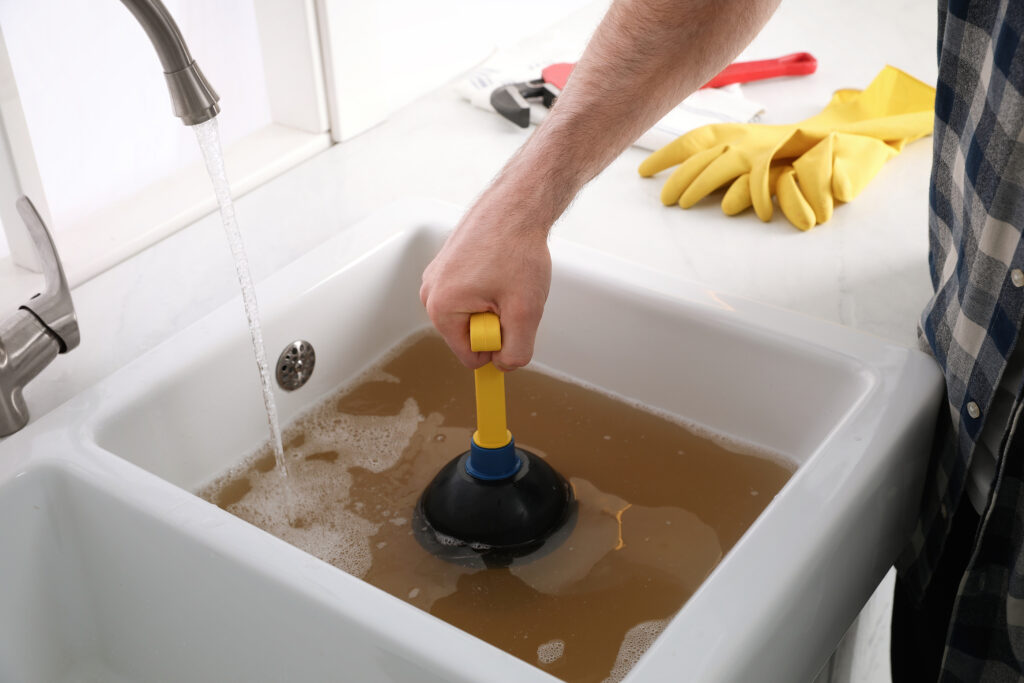A blocked sink can be a frustrating and inconvenient problem, whether it occurs in your kitchen or bathroom. It can disrupt daily tasks like washing dishes, brushing your teeth, or taking a shower. Fortunately, most blockages can be prevented or fixed with some simple techniques and tools. In this article, we’ll explore effective solutions to clear your sink drain and keep it flowing smoothly.
1. Use Boiling Water
One of the easiest and most cost-effective ways to clear a blocked sink is by using boiling water. Hot water can help dissolve grease, soap scum, and other residues that may be causing the blockage.
How to Do It:
- Boil a kettle of water.
- Pour the boiling water down the drain in stages, allowing the water to work through the pipes and loosen the clog.
- Repeat this process a few times if necessary.
Boiling water is particularly effective for grease blockages in kitchen sinks or soap scum buildup in bathroom sinks.
2. Try Baking Soda and Vinegar
A popular homemade remedy for blocked drains involves using baking soda and vinegar. This combination creates a fizzing reaction that can help break down organic materials and other debris causing the blockage.
How to Do It:
- Pour about half a cup of baking soda down the drain.
- Follow it with half a cup of vinegar.
- Cover the drain with a stopper or cloth to contain the reaction.
- Let the mixture sit for 15–20 minutes.
- Flush the drain with hot water.
This method is effective for minor blockages and works well for both kitchen and bathroom sinks.
3. Use a Plunger
A plunger is a simple yet effective tool that can help clear many types of blockages. The suction created by the plunger helps dislodge the obstruction and restore water flow.
How to Do It:
- Place the plunger over the drain, ensuring it fully covers the opening.
- Create a seal by pressing down firmly, then rapidly push and pull the handle to create suction.
- After several attempts, check if the water starts draining again.
Make sure to use a plunger designed for sinks rather than a toilet plunger for best results.
4. Try a Drain Snake or Auger
If the blockage is deeper in the pipes or is more stubborn, a drain snake (or auger) can help break up the clog. This tool is a long, flexible coil that can reach far down into the drain and grab or break up the obstruction.
How to Do It:
- Insert the end of the drain snake into the drain.
- Turn the handle to rotate the snake, allowing it to move through the pipes and grab the clog.
- Once you feel resistance, continue rotating the snake to break up the blockage.
- Pull the snake out and flush the drain with hot water.
Drain snakes can be purchased at hardware stores and are a useful tool for tackling more challenging clogs.
5. Clean the Drain Trap
The U-shaped pipe beneath your sink, called the drain trap, can accumulate debris over time, leading to blockages. Cleaning it out may solve the problem.
How to Do It:
- Place a bucket or pan beneath the drain trap to catch any water.
- Use a wrench or hand tools to unscrew the trap.
- Remove any debris, food particles, or hair that may have built up inside.
- Clean the trap with hot water and reinstall it.
Cleaning the drain trap can eliminate clogs caused by debris and restore proper drainage.
6. Use Chemical Drain Cleaners (With Caution)
Chemical drain cleaners are available in most supermarkets and can be effective for clearing blocked sinks. However, they should be used sparingly and with caution, as they can be harsh on pipes and potentially harmful to your health.
How to Do It:
- Follow the instructions on the label carefully.
- Pour the recommended amount of cleaner down the drain.
- Wait for the specified amount of time for the cleaner to break down the clog.
- Flush the drain with warm water.
If you decide to use a chemical drain cleaner, ensure you take necessary precautions, including wearing gloves and ensuring the area is well-ventilated.
7. Prevent Future Blockages with Regular Maintenance
To keep your sink free of clogs in the future, regular maintenance is essential. Simple habits like using a drain strainer and avoiding the disposal of grease or large food particles can prevent blockages from occurring.
Preventative Tips:
- Use a Drain Strainer: Install a strainer in your sink to catch food particles, hair, and other debris before they enter the drain.
- Avoid Pouring Grease Down the Drain: Grease solidifies in pipes and causes blockages. Instead, dispose of it in the trash.
- Flush Drains Regularly: Pour boiling water down your drains once a month to help prevent buildup.
- Clean the Trap: Periodically clean the drain trap to remove debris and prevent clogs from forming.
8. Call a Professional Plumber
If your sink remains blocked despite your best efforts, it may be time to call in a professional plumber. They can perform a thorough inspection of your pipes, identify the source of the blockage, and offer more advanced solutions like hydro-jetting or pipe replacement if necessary.
Professional plumbers can also offer advice on maintaining your plumbing system and preventing future blockages.
Conclusion
A blocked sink is a common issue, but with the right tools and techniques, you can often fix the problem yourself. By regularly maintaining your drains and addressing clogs early, you can keep your sink flowing smoothly and avoid costly repairs. If the blockage persists or worsens, don’t hesitate to seek professional help to resolve the issue quickly and effectively.
